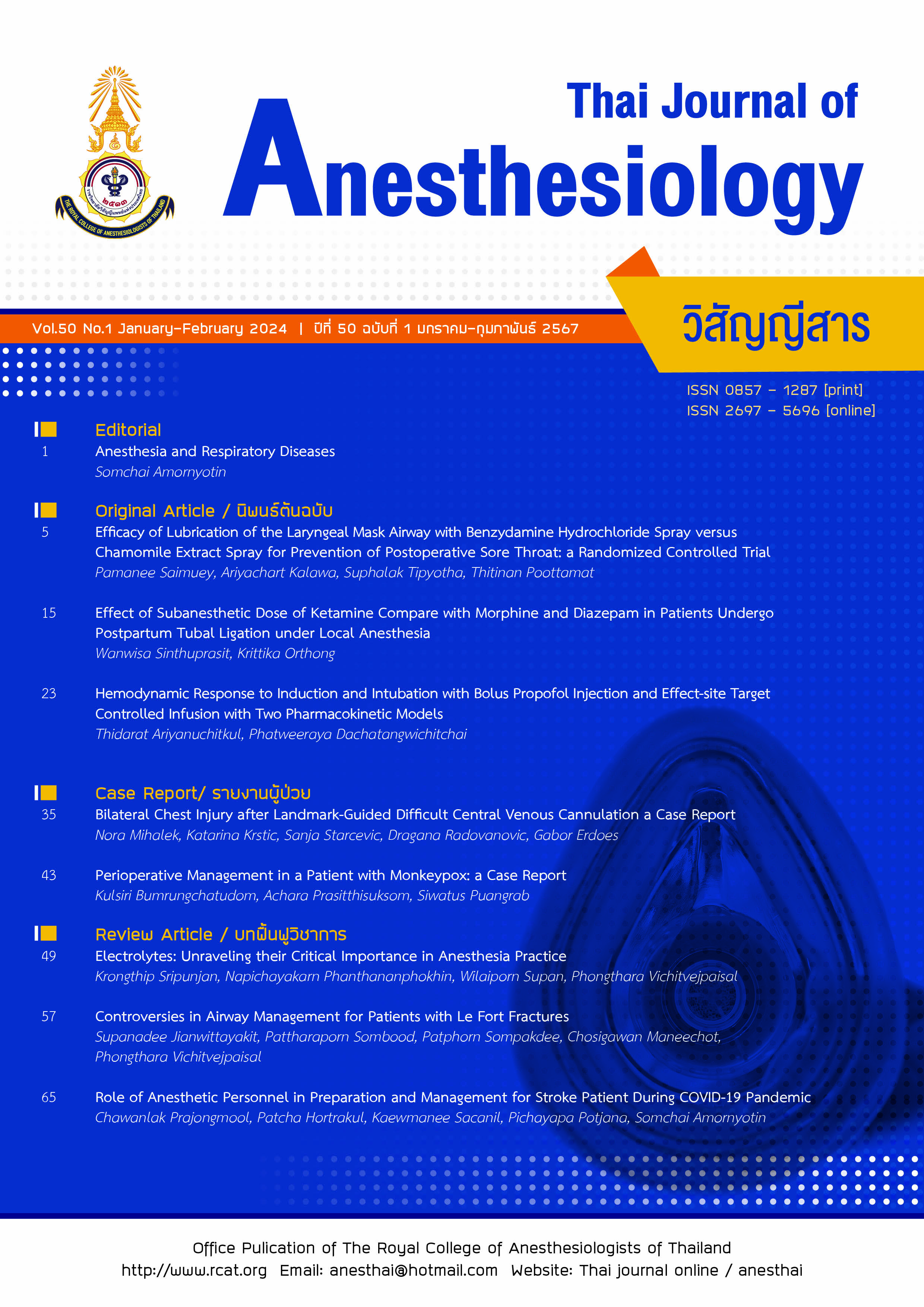Bilateral Chest Injury after Landmark-Guided Difficult Central Venous Cannulation-a Case Report
Main Article Content
Abstract
Central venous catheter placement is a high-risk procedure in anesthesia practice. We report a case of bilateral chest injury after difficult central venous catheter placement according to the landmark technique. Thirty hours after central venous catheter placement, the patient developed a right-sided hydrothorax (secondary to malposition of the central venous catheter) and a left-sided pneumothorax (secondary to multiple attempts at central venous catheter insertion). The patient was intubated and bilateral chest drainage was performed. This report underlines the importance of avoiding bilateral central venous puncture and highlights the importance of proper diagnostics to detect post-intervention complications.
Article Details

This work is licensed under a Creative Commons Attribution-NonCommercial-NoDerivatives 4.0 International License.
References
Jamshidi R. Central venous catheters: indications, techniques, and complications. Semin Pediatr Surg. 2019;28:26-32.
Machat S, Eisenhuber E, Pfarl G, Stübler J, et al. Complications of central venous port systems: a pictorial review. Insights Imaging. 2019;10:86.
Müller-Ortiz H, Pedreros-Rosales C, Silva-Carvajal JP, et al. Prevalence of complications associated with central venous catheter instalation for hemodyalisis. Rev Med Chil. 2019;147:458-64.
Bell J, Goyal M, Long S, et al. Anatomic site-specific complication rates for central venous catheter insertions. J Intensive Care Med. 2020;35:869-74.
Timsit JF. What is the best site for central venous catheter insertion in critically ill patients? Crit Care. 2003;7:397-9.
Pikwer A, Baath L, Davidson B, Perstoft I, Akeson J. The incidence and risk of central venous catheter malpositioning: a prospective cohort study in 1619 patients. Anaesth Intensive Care. 2008;36:30-7.
American Society of Anesthesiologists. Practice guidelines for central venous access 2020. An upated report by the American Society of Anesthesiologists Task Force on central venous access. Anesthesiology. 2020;132:8-43.
Bridges KG, Welch G, Silver M, Schinko MA, Esposito B. CT detection of occult pneumothorax in multiple trauma patients. J Emerg Med. 1993;11:179-86.
Safety Committee of Japanese Society of
Anesthesiologists. Practical guide for safe central vein catheterization and management 2017.
J Anesth. 2020;34:167-86.
Millington SJ, Lalu MM, Boivin M, Koenig S. Better with ultrasound: subclavian central venous catheter insertion. Chest. 2019;155:1041-8.
Brass P, Hellmich M, Kolodziej L, Schick G, Smith AF. Ultrasound guidance versus anatomical landmarks for internal jugular vein catetherization. Cochrane Database Syst Rev. 2015;1:CD006962.
Parmar MS. (F)utility of “routine” postprocedural chest radiograph after hemodialysis catheter (central venous catheter) insertion. J Vasc Access. 2021;22:4-8.
Zanobetti M, Coppa A, Bulletti F, et al. Verification of correct central venous catheter placement in the emergency department: comparison between ultrasonography and chest radiography. Intern Emerg Med. 2013;8:173-80.
Smit JM, Raadsen R, Blans MJ, Petjak M, Van de Ven PM, Tuinman PR. Bedside ultrasound to detect central venous catheter misplacement and associated iatrogenic complications: a systematic review and meta-analysis. Crit Care. 2018;22:65.


